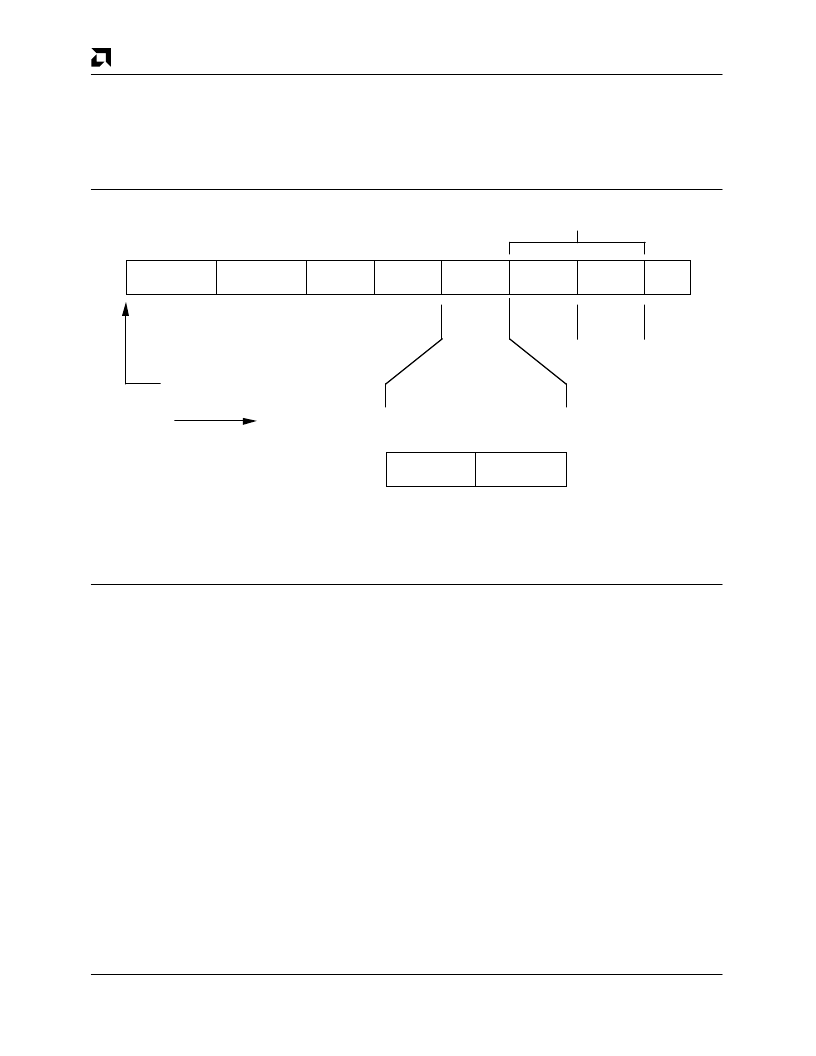- 您現(xiàn)在的位置:買賣IC網(wǎng) > PDF目錄366550 > AM79C940VCW (ADVANCED MICRO DEVICES INC) Media Access Controller for Ethernet (MACE) PDF資料下載
參數(shù)資料
| 型號: | AM79C940VCW |
| 廠商: | ADVANCED MICRO DEVICES INC |
| 元件分類: | 微控制器/微處理器 |
| 英文描述: | Media Access Controller for Ethernet (MACE) |
| 中文描述: | 4 CHANNEL(S), 10M bps, LOCAL AREA NETWORK CONTROLLER, PQFP80 |
| 封裝: | TQFP-80 |
| 文件頁數(shù): | 54/122頁 |
| 文件大小: | 914K |
| 代理商: | AM79C940VCW |
第1頁第2頁第3頁第4頁第5頁第6頁第7頁第8頁第9頁第10頁第11頁第12頁第13頁第14頁第15頁第16頁第17頁第18頁第19頁第20頁第21頁第22頁第23頁第24頁第25頁第26頁第27頁第28頁第29頁第30頁第31頁第32頁第33頁第34頁第35頁第36頁第37頁第38頁第39頁第40頁第41頁第42頁第43頁第44頁第45頁第46頁第47頁第48頁第49頁第50頁第51頁第52頁第53頁當(dāng)前第54頁第55頁第56頁第57頁第58頁第59頁第60頁第61頁第62頁第63頁第64頁第65頁第66頁第67頁第68頁第69頁第70頁第71頁第72頁第73頁第74頁第75頁第76頁第77頁第78頁第79頁第80頁第81頁第82頁第83頁第84頁第85頁第86頁第87頁第88頁第89頁第90頁第91頁第92頁第93頁第94頁第95頁第96頁第97頁第98頁第99頁第100頁第101頁第102頁第103頁第104頁第105頁第106頁第107頁第108頁第109頁第110頁第111頁第112頁第113頁第114頁第115頁第116頁第117頁第118頁第119頁第120頁第121頁第122頁

AMD
54
Am79C940
Receive frames which have a length field of 46 bytes or
greater will be passed to the host unmodified.
Since any valid Ethernet Type field value will always be
greater than a normal 802.3 Length field, the MACE de-
vice will not attempt to strip valid Ethernet frames.
Note that for some network protocols, the value passed
in the Ethernet Type and/or 802.3 Length field is not
compliant with either standard and may cause
problems.
The diagram below shows the byte/bit ordering of the re-
ceived length field for an 802.3 compatible frame format.
16907A-013A
Preamble
1010....1010
SYNCH
10101011
Dest.
ADDR.
SRCE.
ADDR.
Length
LLC
DATA
Pad
FCS
56
Bits
8
Bits
6
Bytes
6
Bytes
2
Bytes
46-1500
Bytes
4
Bytes
Most
Significant
Byte
Least
Significant
Byte
Bit
0
Bit
7
Start of Packet
at Time= 0
Increasing Time
Bit
7
Bit
0
45-0
Bytes
1-1500
Bytes
16235C-9
802.3 Packet and Length Field Transmission Order
Receive FCS Checking
Reception and checking of the received FCS is per-
formed automatically by the MACE device. Note that if
the Automatic Pad Stripping feature is enabled, the re-
ceived FCS will be verified against the value computed
for the incoming bit stream including pad characters, but
it will not be passed through the Receive FIFO to the
host. If an FCS error is detected, this will be reported by
the FCS bit (bit 4) in the Receive Frame Status.
Receive Status Information
The
EOF
indication signals that the last byte/word of
data has been passed from the FIFO for the specific
frame. This will be accompanied by a RCVINT indication
in the the Interrupt Register signaling that the Receive
Frame Status has been updated, and must be read. The
Receive Frame Status is a single location which must be
read four times to allow the four bytes of status informa-
tion associated with each frame to be read. Further data
read operations from the Receive FIFO using the Regis-
ter Address mode, will be ignored by the MACE device
(indicated by the MACE chip not returning
DTV
) until all
four bytes of the Receive Frame Status have been read.
Alternatively, the FIFO Direct access mode may be
used to read the Receive Frame Status through the Re-
ceive FIFO. In either case, the 4-byte total must be read
before additional receive data can be read from the Re-
ceive FIFO. However, the
RDTREQ
indication will con-
tinue to reflect the state of the Receive FIFO as normal,
regardless of whether the Receive Frame Status has
been read.
DTV
will not be returned when a read opera-
tion is performed on the Receive Frame Status location
and no valid status is present or ready.
Note that the Receive Frame Status can be read using
either the Register Address or FIFO Direct modes. For
additional details, see the section Receive FIFO Read.
Receive Exception Conditions
Exception conditions for frame reception fall into two
distinct categories; those which are the result of normal
network operation, and those which occur due to abnor-
mal network and/or host related events.
Normal events which may occur and which are handled
autonomously by the MACE device are basically colli-
sions within the slot time and automatic runt packet de-
letion. The MACE device will ensure that any receive
packet which experiences a collision within 512 bit times
相關(guān)PDF資料 |
PDF描述 |
|---|---|
| AM79C940 | Media Access Controller for Ethernet (MACE) |
| AM79C940JCW | Media Access Controller for Ethernet (MACE) |
| AM79C940KCW | Media Access Controller for Ethernet (MACE) |
| AM79C960 | PCnetTM-ISA Single-Chip Ethernet Controller |
| AM79C960KC | PCnetTM-ISA Single-Chip Ethernet Controller |
相關(guān)代理商/技術(shù)參數(shù) |
參數(shù)描述 |
|---|---|
| AM79C940VI | 制造商:未知廠家 制造商全稱:未知廠家 功能描述:LAN Node Controller |
| AM79C940VI/W | 制造商:未知廠家 制造商全稱:未知廠家 功能描述:LAN Node Controller |
| AM79C945 | 制造商:未知廠家 制造商全稱:未知廠家 功能描述: |
| AM79C945-16 | 制造商:未知廠家 制造商全稱:未知廠家 功能描述: |
| AM79C945-16JC | 制造商:未知廠家 制造商全稱:未知廠家 功能描述:LAN Node Controller |
發(fā)布緊急采購,3分鐘左右您將得到回復(fù)。